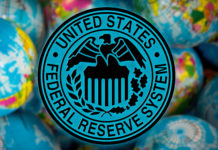Key insights from the week that was.
In Australia, the release of the week was certainly the Monthly CPI Indicator for May which reported a lift in headline inflation from 3.6%yr in April to 4.0%yr – as Westpac forecast – and a lift in the annual trimmed mean from 4.1%yr to 4.4%yr. Being the mid-month of the quarter, the May release importantly provided an update on services inflation. While the acceleration in service inflation from 4.0%yr to 4.8%yr was headline grabbing, the underlying composition was of less concern.
To start, the surge in holiday travel and accommodation – which has the equal-highest weight within the services category – surged from –6.2%yr in April to +2.9%yr in May; however, this was largely due to base effects as May 2023’s massive 11.3%mth decline cycled out of the annual rate calculation. Other major services components were either unmeasured, unchanged, or even down slightly in the case of rents and restaurant meals, while small services components were mixed. Goods inflation meanwhile held flat at 3.3%yr.
This detail emphasises the importance of gauging measures which smooth out volatility, such as the index that excludes ‘volatile items’ and holiday travel. In May, this measure moderated from 4.1%yr to 4.0%yr in contrast to the lift in headline inflation. While still consistent with persistent inflation pressures, it does not suggest a re-acceleration in price pressures or new risks.
In this week’s essay, Chief Economist Luci Ellis considers how this update may be perceived by the RBA, drawing on information from this week’s speeches from RBA Assistant Governor (Financial Markets) Kent on Tuesday and Deputy Governor Hauser last night.
Against this backdrop, it is hardly surprising that consumer confidence remains weak. The June Westpac-MI Consumer Sentiment Survey reported a slight 1.3% improvement to 83.6, a level only previously seen during other major economic dislocations. A lift across both ‘family finances vs a year ago’ (+9.7% to 69.3) and ‘time to buy a major item’ sub-indexes (+4.2% to 79.7) is certainly welcome, but both sub-indexes also remain well below their respective long-run averages (88.3 and 124.4 respectively). Views around the labour market also look to have shifted from constructive to cautious, consistent with a softening labour market and moderating job vacancies.
Crucial to the near-term outlook for confidence will be households’ responses to imminent fiscal stimulus, both state and federal, and their views on the chances and scale of interest rate relief. On the latter, the latest updates are not encouraging. Sentiment deteriorated materially between those surveyed before the RBA policy meeting (90.0) and after (80.1), suggesting the RBA’s ‘vigilance’ to upside inflation risks was a cause for concern. Indeed, Westpac-MI mortgage rate expectations correspondingly surged, with around half of consumers now anticipating an increase in mortgage rates over the next year.
Before moving offshore, a final note on industry. The Q2 ACCI-Westpac Business Survey showcased an improvement in conditions for the manufacturing sector moving into mid-year, the Westpac-ACCI Actual Composite lifting back into expansionary territory, from 43.4 to 54.1, after a slower-than-usual start to the year. The rebound in new orders and subsequent lift in output growth was key, both of which have scope to continue contributing positively over the period ahead, not only in manufacturing but also the broader economy (as explored in our latest Coast-to-Coast). However, the survey reminds us that there remain significant challenges facing the sector, particularly around difficulties in finding skilled labour and elevated cost pressures, which are in part being passed on in the form of higher prices. The survey adds to the evidence that supports the RBA’s “vigilant” stance to possible upside inflation risks; but as emphasised above, the Q2 CPI update will be all-important in gauging the extent to which these may materialise.
Offshore, the data this week was mixed, as was commentary from FOMC members.
Canadian inflation surprised to the upside in May, the CPI rising 0.6% against a 0.3% expectation, leaving annual inflation at 2.9%yr compared to 2.7%yr in April. The average of the two core measures is also around 2.9%yr, from 2.7%yr. Unsurprisingly, services inflation was behind the lift in headline and core inflation, accelerating to 4.6%yr from 4.0% previously. While one month’s data does not make a trend, the May outcomes make clear that monetary policy normalisation is likely to prove protracted and result in a return to near neutral policy, not an expansionary setting.
In the US, Q1 GDP edged higher in the third estimate from 1.3% annualised to 1.4%. However, revisions to the detail pointed to softer private demand and inflation prospects. Upward revisions to growth in business investment (from 6.0% annualised to 7.0%), government spending (from 1.3% annualised to 1.8%) and the contribution from net exports (from -0.89ppts to -0.65ppts) were offset by weaker momentum in consumption (growth marked down from 2.0% to 1.5% annualised). Below-trend momentum for the consumer has also been seen at the start of Q2, justifying a belief that demand pressures for inflation are continuing to dissipate.
Durable goods orders held up better than expected in May, rising 0.1%. However, the 0.4% downward revision to April offset the upside surprise in May. Core durable orders (ex transport and defence) were weak in May at -0.6% and April’s small gain was little changed at 0.3%, suggesting a decline in real business equipment investment in Q2. The regional Fed manufacturing gauges released this week also pointed to weakness in the business sector, but initial jobless claims remained near their historic lows. It is little wonder that the US consumer remains concerned about the near-term outlook while remaining constructive on medium-term prospects.
Commentary from FOMC members this week was atypical, with concern shown over both downside risks to activity and upside risks for inflation. Thankfully, these risks are not expected to coincide. Rather the varied views speak to a high degree of uncertainty over the outlook. In an interview with CNBC, Chicago Fed President Goolsbee highlighted “a couple of warning signs” with respect to consumer demand. San Francisco Fed President Daly separately noted that we “are getting nearer to a point where the outcomes on employment might be less benign”, i.e. where firms need to reduce employment levels not just the pace of hiring. Fed Governor Cook subsequently provided a balanced view on the outlook, consistent with the median expectations of the Committee. Fed Governor Bowman instead focused on upside price risks. Both Governors saw 2025 as the year when inflation would materially decelerate from its current level to near target. Underlying this view is an expectation of persistent strength in the economy and, arguably, little weight on the downside risks that Presidents Daly and Goolsbee highlighted.













